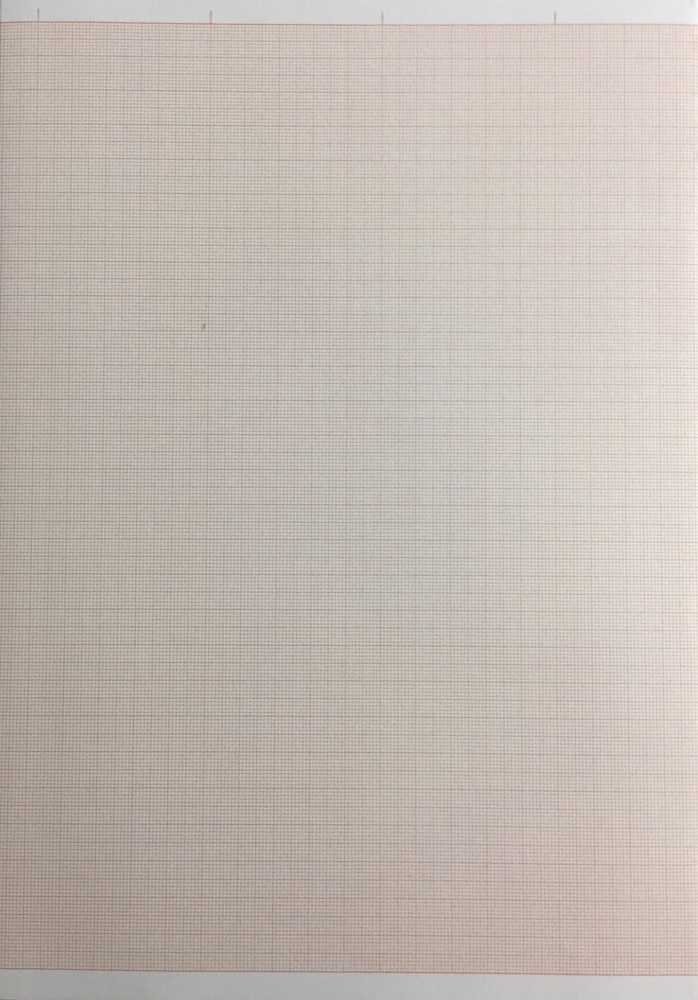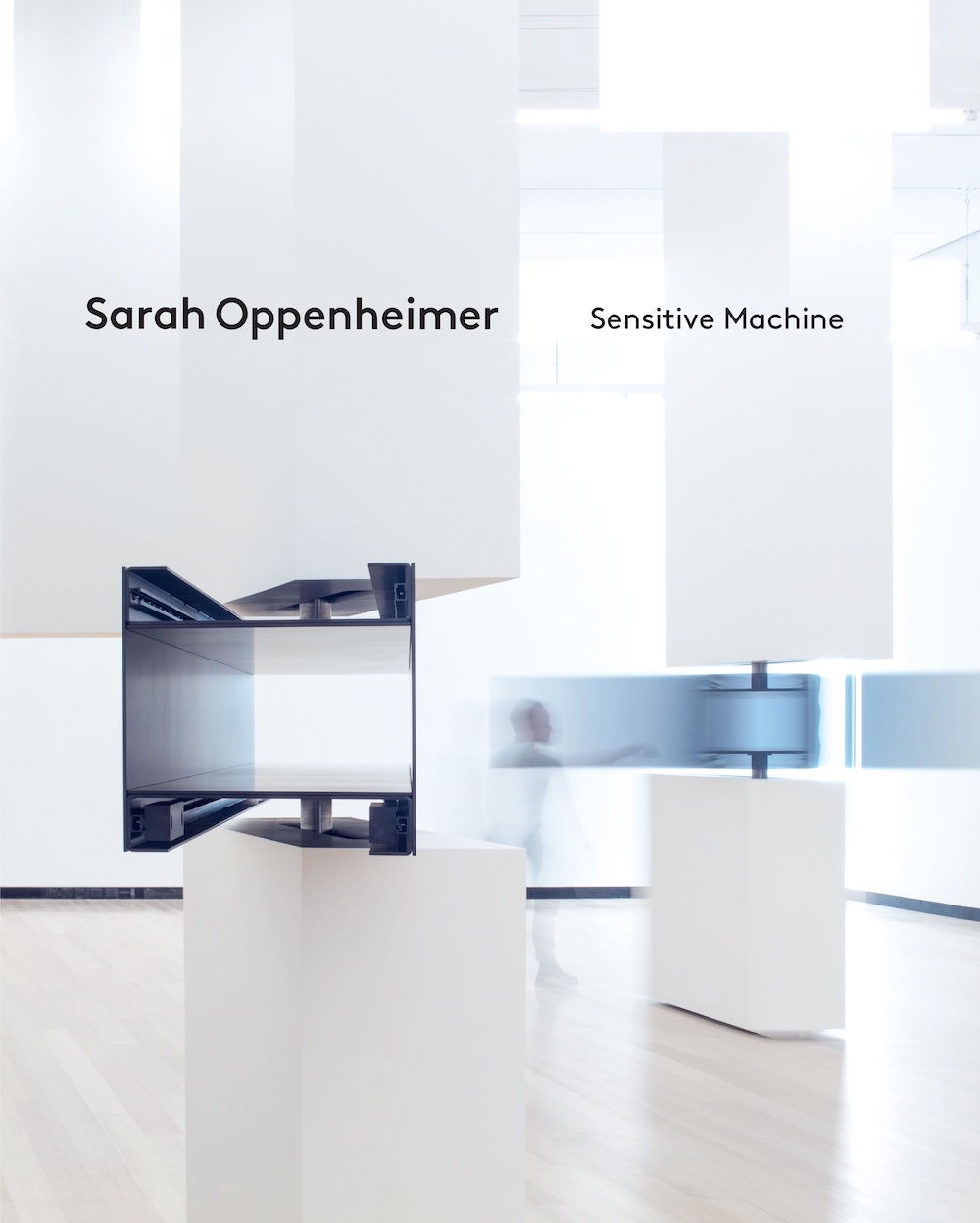Sarah Oppenheimer
33-D
23.5. —
7.9.2014
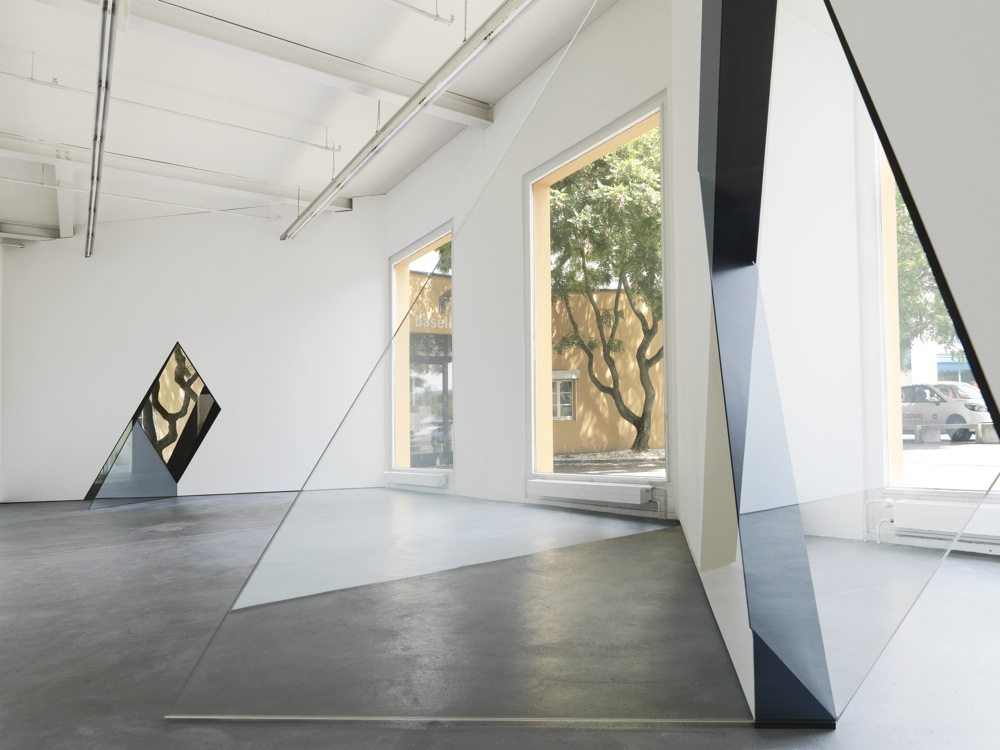
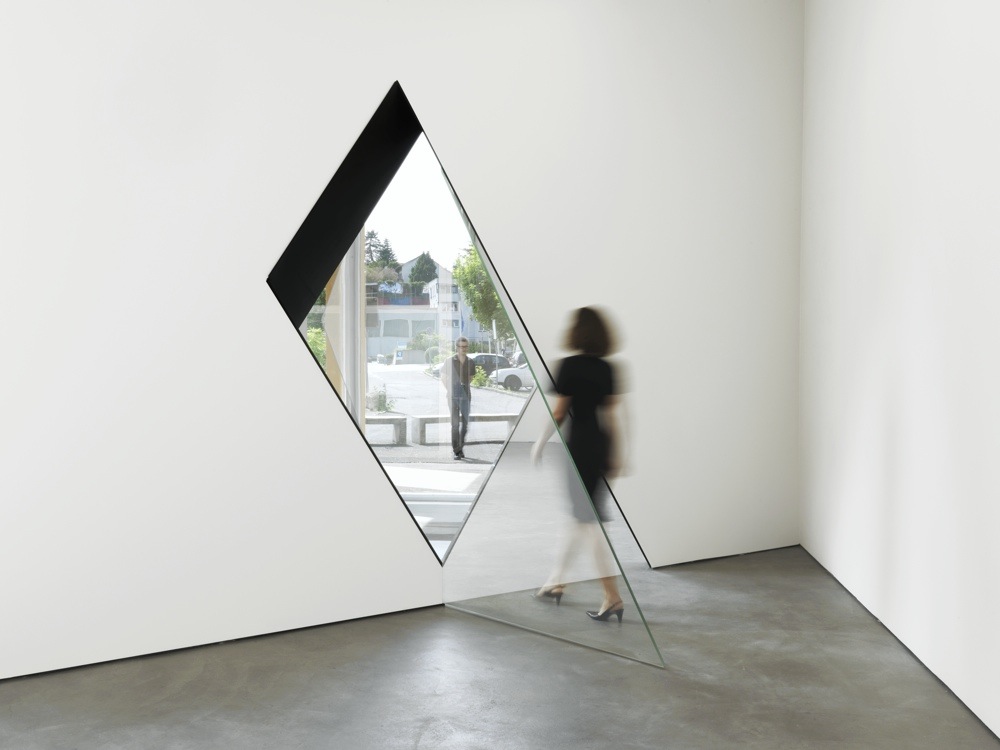
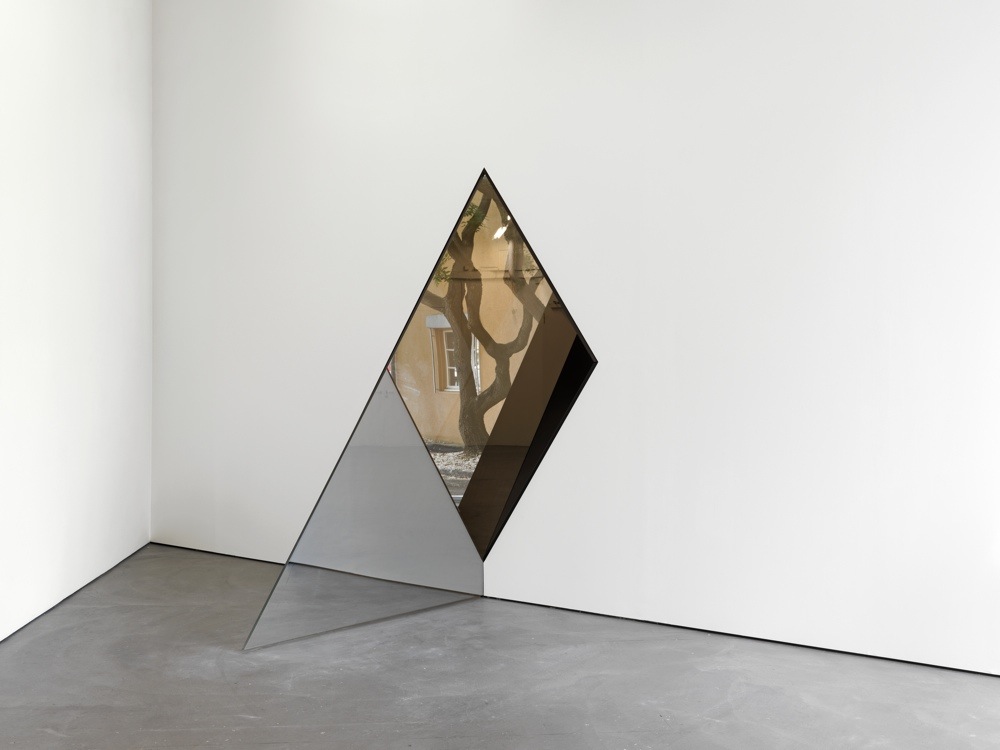
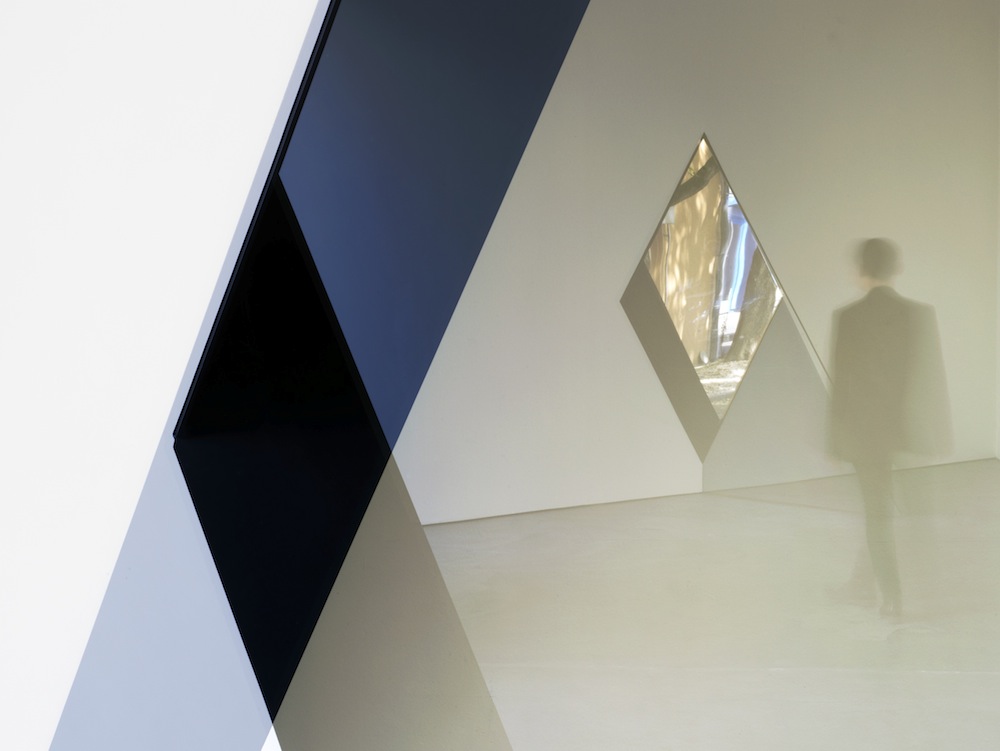
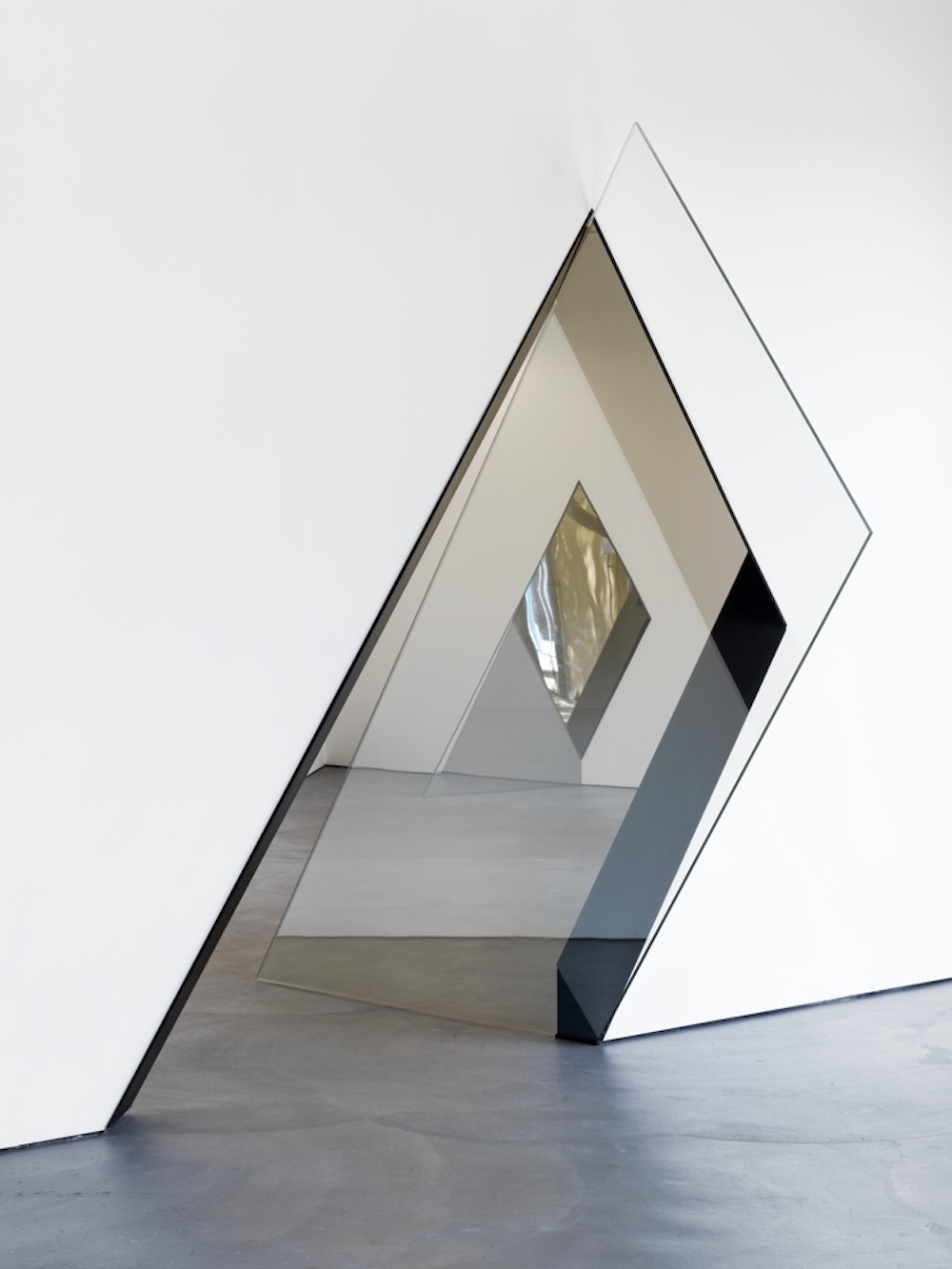
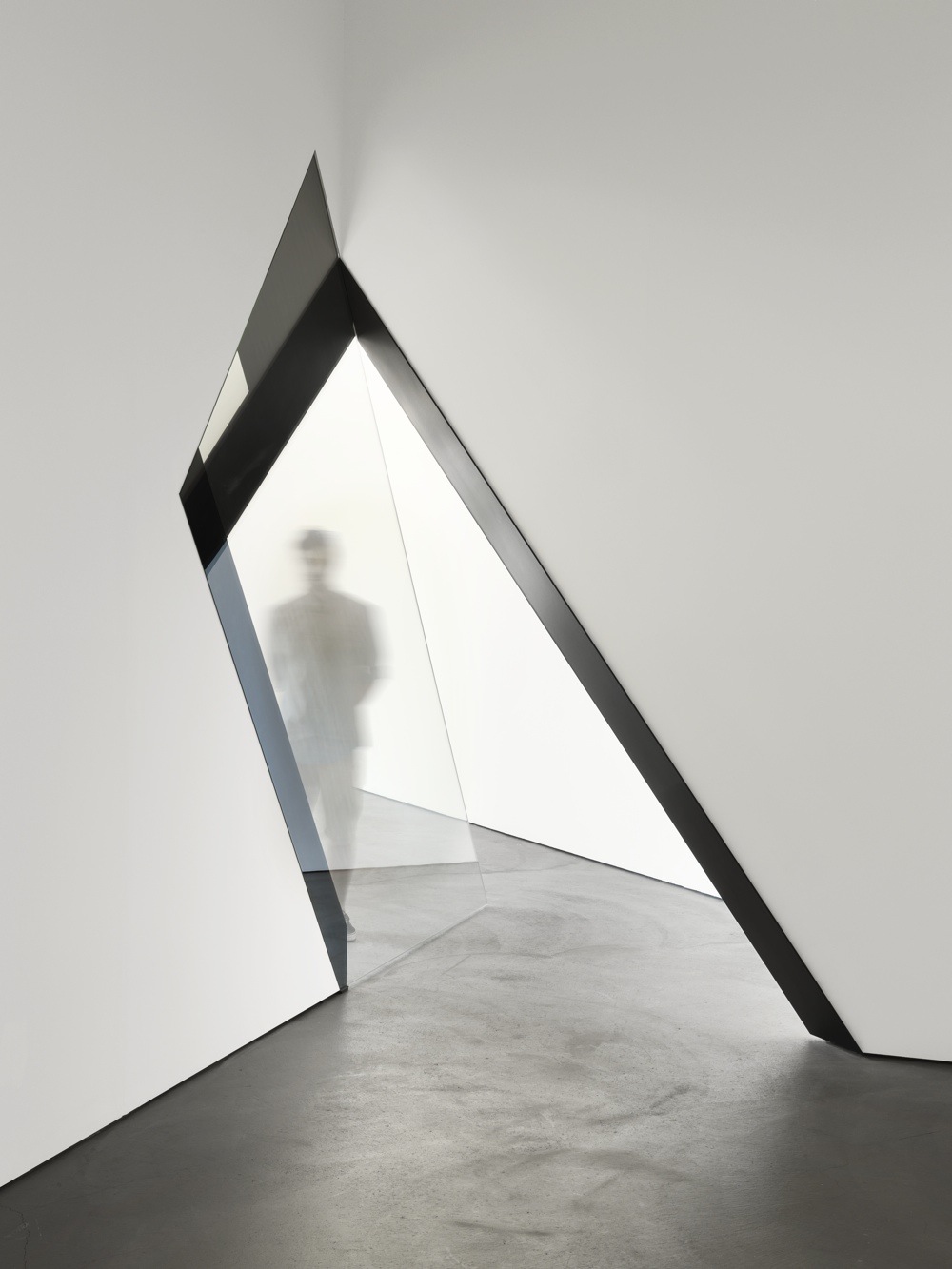
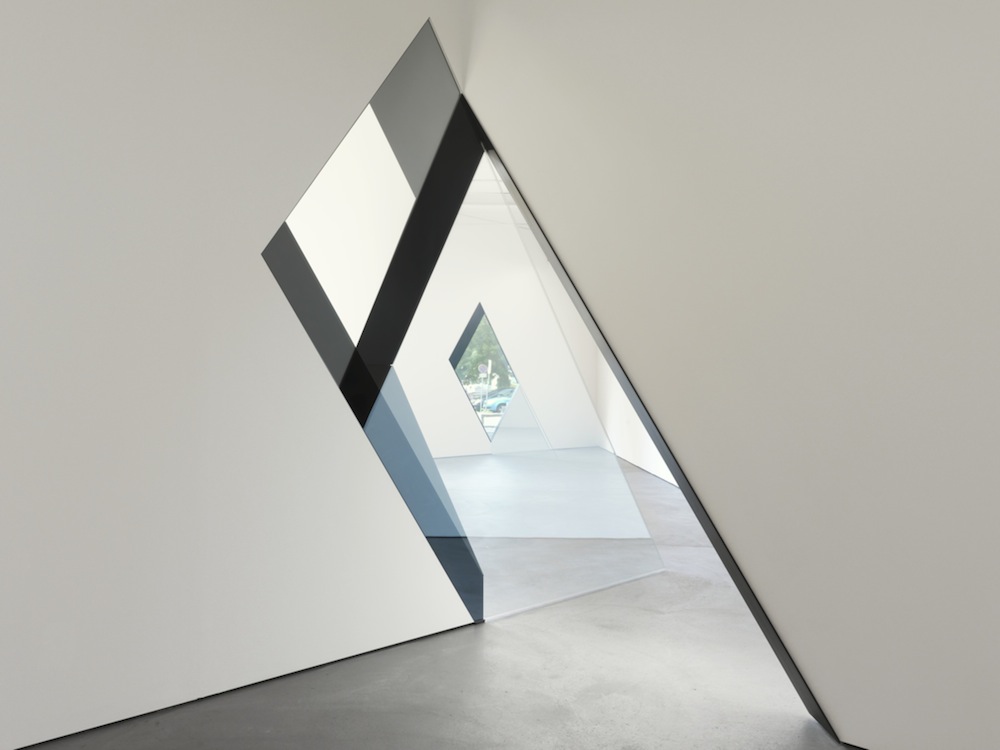
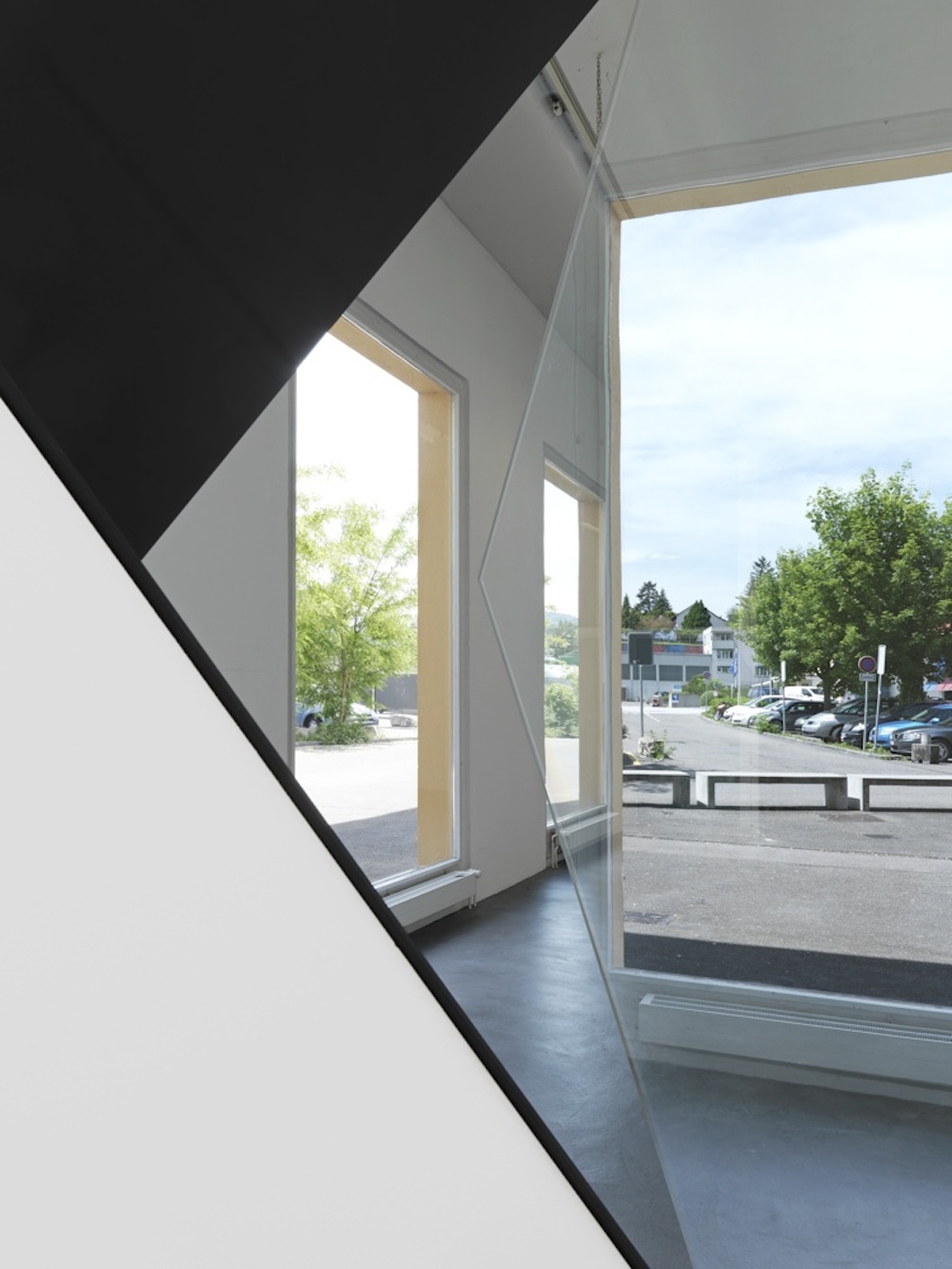
Sarah Oppenheimer, born 1972 and living in New York, presents her first institutional exhibition in Europe at the Kunsthaus Baselland. Her work has been shown at numerous museums across the United States, including at the Baltimore Museum of Art, the Andy Warhol Museum and the Museum of Contemporary Art San Diego.
Developed for Kunsthaus Baselland, 33-D reconfigures the interior spaces of the Kunsthaus along the building’s structural grid. Two large glass sheets are mounted at a 45-degree angle to the external skin of the building. These sheets function simultaneously as both wall and projection surface, reflecting sightlines within and without the museum. Each glass plane creates traversable apertures for the visitor to cross. These openings create unexpected thresholds and trajectories for visitor movement through the space.
Oppenheimer’s interventions disrupt the experience that we, the visitors, have of the succession of spaces within a building. Her work modifies the existing architectural elements of a building while simultaneously altering our perception of the overall building plan. This transformation varies further with changing light conditions at different times of day and year. Instead of a linear experience of space and time, Oppenheimer offers the visitor a reshuffled experience of the two; instead of visitors and viewers, we become direct participants in a situation.
Sarah Oppenheimer in conversation with Ines Goldbach
Excerpt from: Kritisches Lexikon der Gegenwartskunst, Ausgabe 96, Heft 27, 2011
Ines Goldbach (IG): I think it is important to understand that in your work there is a connection between rational strategy and intuitive decision-making. Not everything can be planned or is foreseeable.
Sarah Oppenheimer (SO): Yes. The specificity of place always introduces the unexpected. This allows each project to remain an open-ended exploration. It keeps it interesting.
IG: Some of your works can be very destabilizing for the viewer. Is de-stabilization of the viewer an important aspect for you?
SO: I am interested in the friction between a viewer’s perception of place and a viewer’s expectation. A piece is successful when it prompts a viewer to rethink their surroundings. This rethinking results from an alteration of the conventions of spatial demarcation. That can often be somewhat destabilizing.
IG: To open up spaces could be very radical and of course has a certain effect on the whole building. Is aggressiveness a notion you are thinking of?
SO: It is a question of how aggressiveness is directed. Rather than directing aggressive action towards or at the viewer, it is directed at the environment surrounding the viewer. If you think, for example, about certain works by Bruce Nauman, for example the Green Light Corridor, you have a very specific form of aggressiveness. While this piece aggressively challenges the viewer by placing the body in a specific environment, the work remains extremely polite towards the surrounding space. Any intervention into an existing spatial array engages with a different system of problems: the proprietary rights over the space, building management, boundaries between public and private, the political hierarchy of decision making in social space, and of course, the experience of the viewer within this system. Aggressiveness is an interesting notion: if you come to a museum and say «I want to remove this section of your building» an invisible set of political forces becomes immediately apparent.
IG: I think by opening up spaces the moving viewer has the possibility of being aware of his entire situation. So in my opinion your work is all about sensitizing one’s perception and the awareness of your present situation.
SO: In certain pieces, the viewer is able to rethink their immediate surroundings through recognition of a whole situation. This is much more complicated than viewing your immediate surroundings. Instead, you are suddenly able to experience a diagrammatic picture of the space — but you never see it. It crosses; it cuts against your immediate surroundings. I am interested in these disparate experiences of space being simultaneously present.
The exhibition was generously supported by The Embassy of the United States of America, Bern, Novartis, Hans und Renée Müller-Meylan Stiftung, Basellandschaftliche Kantonalbank as well as the partners of the Kunsthaus Baselland.
During Sarah Oppenheimer's exhibition the solo exhibition by Ariel Schlesinger was also on display.
